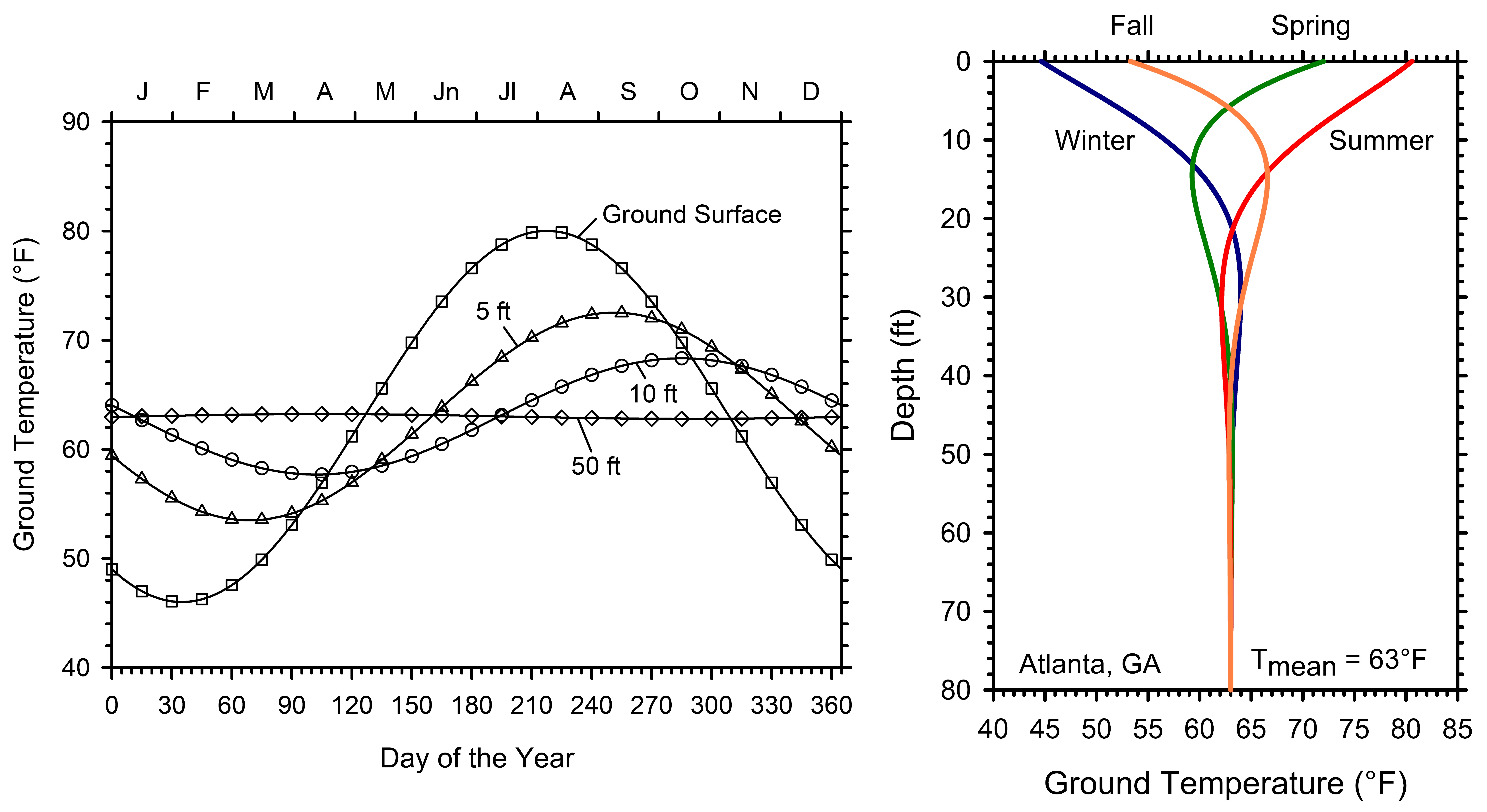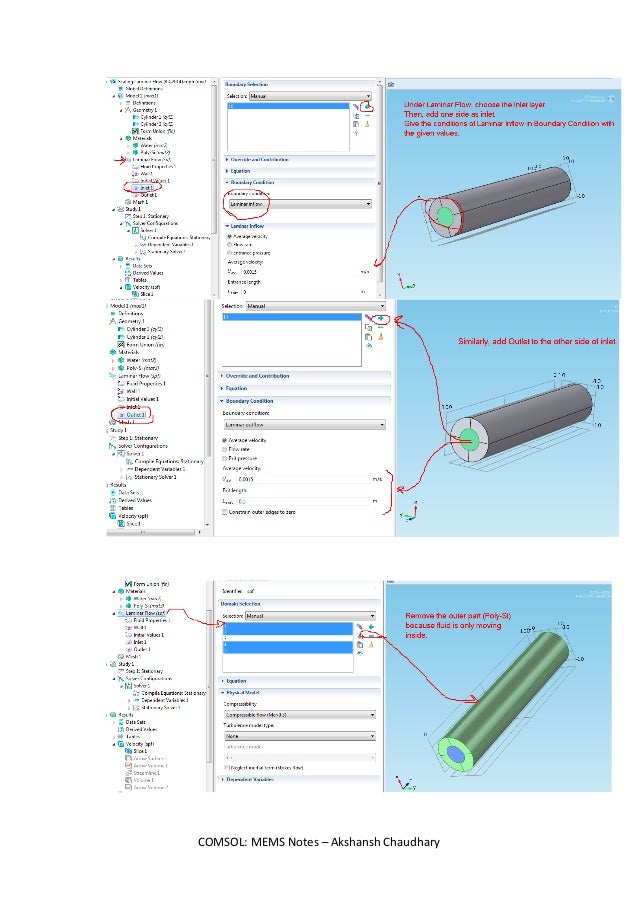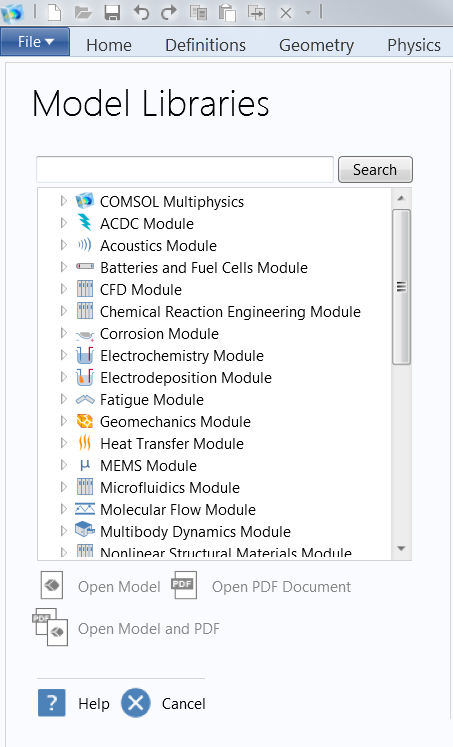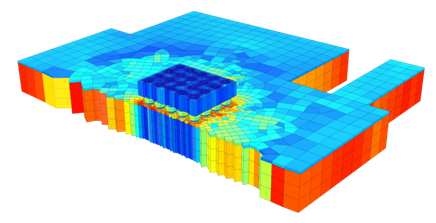
- COMSOL MULTIPHYSICS 4.2 TUTORIAL HOW TO
- COMSOL MULTIPHYSICS 4.2 TUTORIAL GENERATOR
- COMSOL MULTIPHYSICS 4.2 TUTORIAL SOFTWARE
- COMSOL MULTIPHYSICS 4.2 TUTORIAL SERIES
Left: The 2D axisymmetric geometry of an isolated phase with three separate bonding sections and a different scale for transverse and longitudinal directions.

COMSOL MULTIPHYSICS 4.2 TUTORIAL HOW TO
It shows you how to perform basic tasks, such as:įeel free to skip ahead if you feel these topics are old hat to you. This primer allows you to get acquainted with the user-friendly desktop environment of the COMSOL Multiphysics® software, and with numerical modeling in general. Licensed under CC BY-SA 3.0, via Wikimedia Commons. You’ll also get a detailed overview on what to expect in the other seven parts of the series.Ī submarine cable similar to the one modeled throughout this series.
COMSOL MULTIPHYSICS 4.2 TUTORIAL SERIES
Part 1 of the tutorial series is where you meet the model - a three-core lead-sheathed XLPE HVAC (cross-linked polyethylene, high-voltage alternating current) submarine cable with a twisted magnetic armor. The beginning is a very good place to start, as most would say. Part 1: Introducing the Basics and Fundamentals of Cable Modeling The 3D twist models (Part 7 and 8) are discussed in another blog post: Using 3D Models to Investigate Inductive Effects in a Submarine Cable.

Note that the models discussed in this blog post are 2D only (Part 1 to 6 of the series).

It has since been updated to reflect the updated tutorial series. Keep reading for a sneak peek of what you’ll learn when you roll up your sleeves and start the series.Įditor’s note: This blog post was originally published on December 29, 2017. The numerical model is based on standard cable designs and validated by reported figures.
COMSOL MULTIPHYSICS 4.2 TUTORIAL SOFTWARE
The Cable Tutorial Series shows how to model an industrial-scale cable in the COMSOL Multiphysics® software and add-on AC/DC Module, and also serves as an introduction to modeling electromagnetic phenomena in general. Time-dependent adaptive meshing automatically resolves sharp diffusion fronts in two-phase flow simulations, bringing faster and more accurate simulations.Īutomatic Remeshing makes more extreme deformation states possible where a simulation with moving mesh is used.Want a roadmap to modeling cables? We have an eight-part tutorial series for you. Virtual Geometry tools allow for modification of CAD models without changing the underlying surface curvature and enable very efficient meshing.
COMSOL MULTIPHYSICS 4.2 TUTORIAL GENERATOR
Report Generator creates HTML reports for models of varying degrees of detail, from brief to complete.Ĭompressible High-Mach Number Flow for designing nozzles, pipe networks, and valves, and for modeling aerodynamic phenomena. LiveLink for SolidWorks allows SolidWorksĮnvironment and work synchronously with COMSOL Multiphysics.įast multiphysics assembly brings faster and more memory efficient computations on virtually any type of computer platform, from laptop to cluster. LiveLink for SpaceClaim brings the fusion of direct modeling and multiphysics simulation in a tightly integrated environment.

LiveLink for AutoCAD makes COMSOL Multiphysics simulations in 3D available for AutoCAD users. Geomechanics Module enables multiphysics modeling in geotechnical applications such as tunnels.Įlectrodeposition Module brings the power of COMSOL to electrochemical processes for chrome plating. Microfluidics Module brings easy-to-use tools for the study of microfluidic devices and rarefied gas flows. With this release, COMSOL continues to deliver on its promise to supply the science and engineering markets with the state-of-the-art simulation products for an expanding set of applications. Version 4.2 empowers current users to do more with their simulation environments, while new industries will now be able to leverage the innovation of multiphysics simulation. COMSOL Multiphysics 4.2 represents a significant expansion of the software’s applications, features, and functionality.


 0 kommentar(er)
0 kommentar(er)
